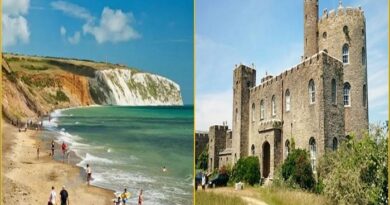Kanchipuram Temples- Where Architecture Meets Divinity
Kanchipuram Temple
Kanchipuram, also known as Kanchi, is a city in the Indian state of Tamil Nadu renowned for its temples, and it holds a significant place in Hinduism. There are numerous temples in Kanchipuram, each with its unique architectural and historical importance. The Kanchi Kailasanathar temple is the oldest structure in Kancheepuram dedicated to Lord Shiva. Kanchipuram temple was built in the 7th century AD by a Pallava king named Rajasimha known as Narasimhavarman II. It is famous for its magnificent Vimana, the gopuram over the sanctum sanctorum. The Shiva lingam in this temple is 10 feet high.
It speaks of architectural beauty that flourished in the reign of Pallava king. The foundation of the temple is laid on granite stones while the superstructure is carved out of sandstone. Currently, the temple is well maintained by the Archaeological Survey of India. It is known as Kanchi Kamakoti Peetam and is believed to be established by Adi Sankara himself as Moolamnaya Sarvajana Peetam.
Kanchipuram weather
Kanchipuram Temple experiences a tropical climate with distinct wet and dry seasons. Here’s an overview of the Kanchipuram weather.
Summer (March to June)
Summer in Kanchipuram is hot, with daytime temperatures ranging from 30 to 40 degrees Celsius. The region can experience high humidity levels, making the heat feel more intense. The summer months are generally dry, and the weather is characterized by clear skies and plenty of sunshine.
Monsoon (July to September)
Kanchipuram weather receives the majority of its annual rainfall during the monsoon season. The temperatures during this period are relatively cooler, ranging from 25 to 35 degrees Celsius. Heavy rainfall is common, and the region may experience occasional thunderstorms. The lush greenery that follows the rains enhances the beauty of the area.

Post-Monsoon (October to December)
The temperatures start to decrease during the post-monsoon period, ranging from 20 to 30 degrees Celsius. This period sees a gradual transition to drier weather with occasional rainfall. The skies become clearer, and humidity levels decrease.
Winter (January to February)
Winter in Kanchipuram is relatively mild, with temperatures ranging from 18 to 28 degrees Celsius. The winter months are generally dry and pleasant, with cooler evenings and mornings. It’s a comfortable time for outdoor activities and sightseeing.
Also Read- The Ultimate Secret Of Mahabalipuram-A UNESCO Site
Best Time to Visit
The post-monsoon and winter months (October to February) are considered the best time to visit Kanchipuram. The weather is relatively cooler during these months, making exploring the temples and other attractions more comfortable.
Kanchipuram Temple History
Kanchipuram, also known as Kanchi, is a city with a rich historical and cultural heritage, especially renowned for its temples. The history of Kanchipuram’s temples is intertwined with the broader historical developments of the region. Kanchipuram Temple has a history that dates back over two millennia. It was an ancient center of learning and was a prominent city during the Sangam period (3rd century BCE to 4th century CE).
The Pallavas (4th to 9th centuries CE) a South Indian dynasty, played a crucial role in the development of Kanchipuram’s temples. Many of the prominent temples in Kanchipuram, such as the Kailasanathar Temple and the Ekambareswarar Temple, were built during the Pallava rule. These temples exhibit early Dravidian architecture and intricate carvings.
The Chola dynasty (9th to 13th centuries CE) also contributed to the temple architecture in Kanchipuram. Several temples were expanded, and renovated, and new structures were added during the Chola period. Today, Kanchipuram remains a significant pilgrimage site and a hub for temple architecture enthusiasts. The temples continue to attract devotees and tourists from across the country and the world.

Kanchipuram Temple list
Kanchipuram, often referred to as the “City of Temples,” is home to numerous temples, each with its own unique architectural and historical significance. Prominent temples in Kanchipuram, including the Kailasanathar Temple, Ekambareswarar Temple, Varadharaja Perumal Temple, and Kamakshi Amman Temple, stand as testaments to the city’s rich history and cultural legacy. The architecture, sculptures, and religious practices in these temples reflect the evolution of art and spirituality in the region over the centuries.
Kailasanathar Temple
This temple is dedicated to Lord Shiva. One of the oldest temples in Kanchipuram was built during the Pallava dynasty. Known for its exquisite Dravidian architecture and intricate carvings.
Ekambareswarar Temple
It is dedicated to Lord Shiva as Ekambareswarar or Ekambaranathar. One of the Pancha Bootha Sthalas, representing the element Earth. The temple has a 3,500-year-old mango tree and a hall with a thousand pillars.
Varadharaja Perumal Temple
The temple is dedicated to Lord Vishnu as Varadharaja Perumal. One of the Divya Desams, a group of 108 temples revered by the Alvars. Known for its majestic Rajagopuram and beautiful sculptures.
Kanchi Kamakshi Amman Temple
The Temple is dedicated to Goddess Kamakshi, a form of Parvati. Considered one of the important Shakthi Peethas. The temple has intricate carvings and is associated with Adi Shankaracharya.

Ulagalanda Perumal Temple
It is dedicated to Lord Vishnu as Trivikrama. Known for its massive idol of Lord Vishnu in a cosmic form. One of the Divya Desams.
Devarajaswami Temple
The Temple is dedicated to Lord Vishnu as Devarajaswami. Famous for its annual Rath Yatra (chariot festival). Features a reclining deity of Lord Vishnu.
Kamakshi Amman Temple
Another temple dedicated to Goddess Kamakshi is associated with Adi Shankaracharya. Considered one of the Shakthi Peethas.
Kachi Metrali – Karchapeswarar Temple
The temple is dedicated to Lord Shiva. Known for its unique idol of Lord Shiva in a seated posture. Holds religious significance.
How to Reach Kanchipuram Temple
The nearest airport to Kanchipuram is the Chennai International Airport. From the airport, you can hire a taxi or take a bus to reach Kanchipuram. The airport is well-connected to major cities in India and some international destinations. Kanchipuram is approximately 72 kilometers from Chennai. You can reach Kanchipuram Temple by taking the NH48 from Chennai. Regular bus services operate between Chennai and Kanchipuram. State-run buses as well as private operators provide bus services. The bus journey may take around 2 to 3 hours, depending on the type of bus and traffic conditions.

Chennai to Kanchipuram temple distance
The distance between Chennai and Kanchipuram Temple is approximately 72 kilometers by road. The travel time may vary depending on the mode of transportation and traffic conditions. Regular bus services operate between Chennai and Kanchipuram. The bus journey may take around 2 to 3 hours, depending on the type of bus and the route.
The journey by car or taxi usually takes around 1.5 to 2 hours, depending on traffic conditions. The route typically involves taking the NH48 from Chennai to Kanchipuram Temple. There is a suburban train network connecting Chennai and Kanchipuram. The train journey takes around 1.5 to 2 hours, depending on the specific train and its stops.



